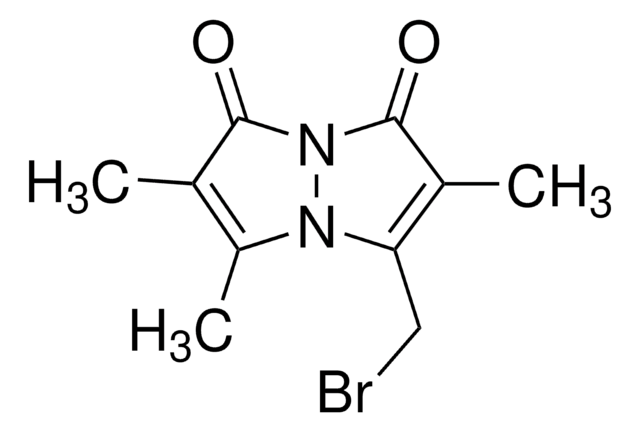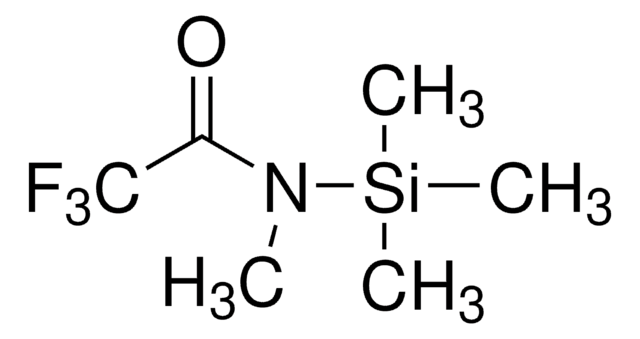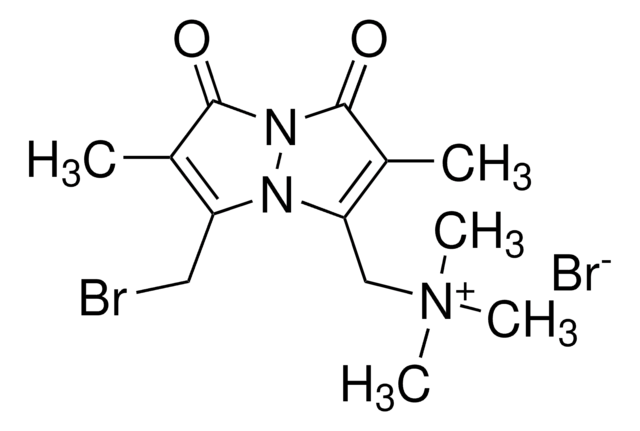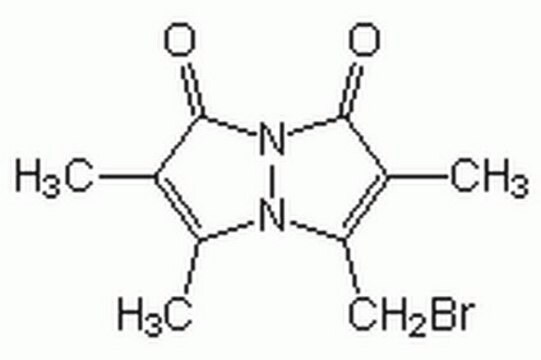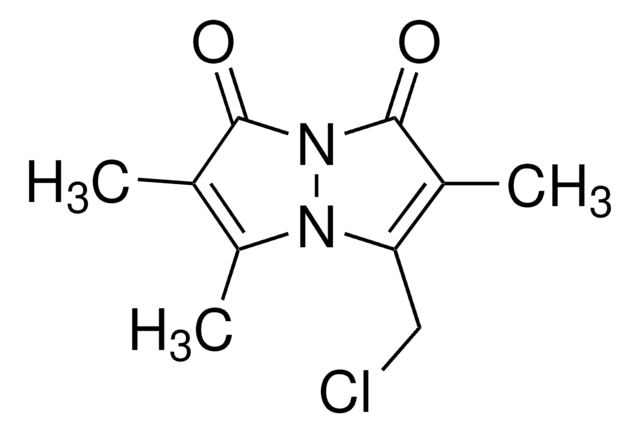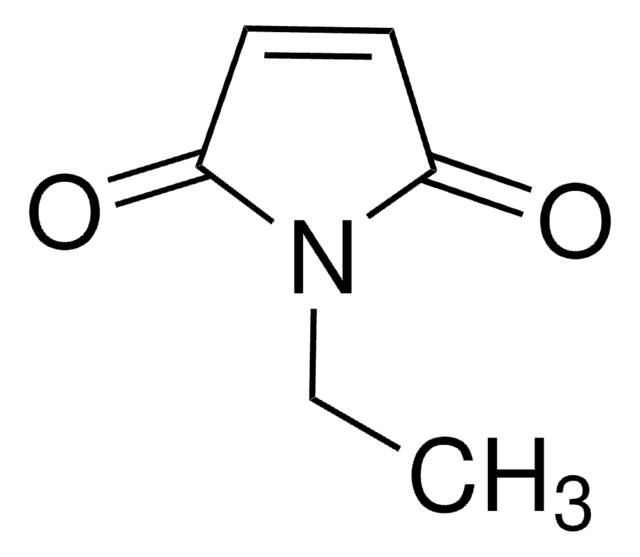69898
Bromobimane
suitable for fluorescence, BioReagent, ≥95% (HPCE)
Sinônimo(s):
Monobromobimane
About This Item
Produtos recomendados
linha de produto
BioReagent
Ensaio
≥95% (HPCE)
Formulário
solid
pf
152-154 °C (lit.)
solubilidade
DMF: soluble
DMSO: soluble
acetonitrile: soluble
methanol: soluble
fluorescência
λex 390 nm; λem 478 nm in 0.1 M phosphate pH 7.5 (after derivatization with glutathione)
λex 398 nm
adequação
suitable for fluorescence
temperatura de armazenamento
2-8°C
cadeia de caracteres SMILES
CC1=C(C)C(=O)N2N1C(CBr)=C(C)C2=O
InChI
1S/C10H11BrN2O2/c1-5-7(3)12-8(4-11)6(2)10(15)13(12)9(5)14/h4H2,1-3H3
chave InChI
AHEWZZJEDQVLOP-UHFFFAOYSA-N
Procurando produtos similares? Visita Guia de comparação de produtos
Categorias relacionadas
Descrição geral
Aplicação
Características e benefícios
- Rapid reactivity.
- Ease of separation of derivatives by reverse HPLC.
- Ability to penetrate cells.
Embalagem
Outras notas
Código de classe de armazenamento
11 - Combustible Solids
Classe de risco de água (WGK)
WGK 3
Ponto de fulgor (°F)
Not applicable
Ponto de fulgor (°C)
Not applicable
Equipamento de proteção individual
Eyeshields, Gloves, type N95 (US)
Escolha uma das versões mais recentes:
Já possui este produto?
Encontre a documentação dos produtos que você adquiriu recentemente na biblioteca de documentos.
Os clientes também visualizaram
Nossa equipe de cientistas tem experiência em todas as áreas de pesquisa, incluindo Life Sciences, ciência de materiais, síntese química, cromatografia, química analítica e muitas outras.
Entre em contato com a assistência técnica